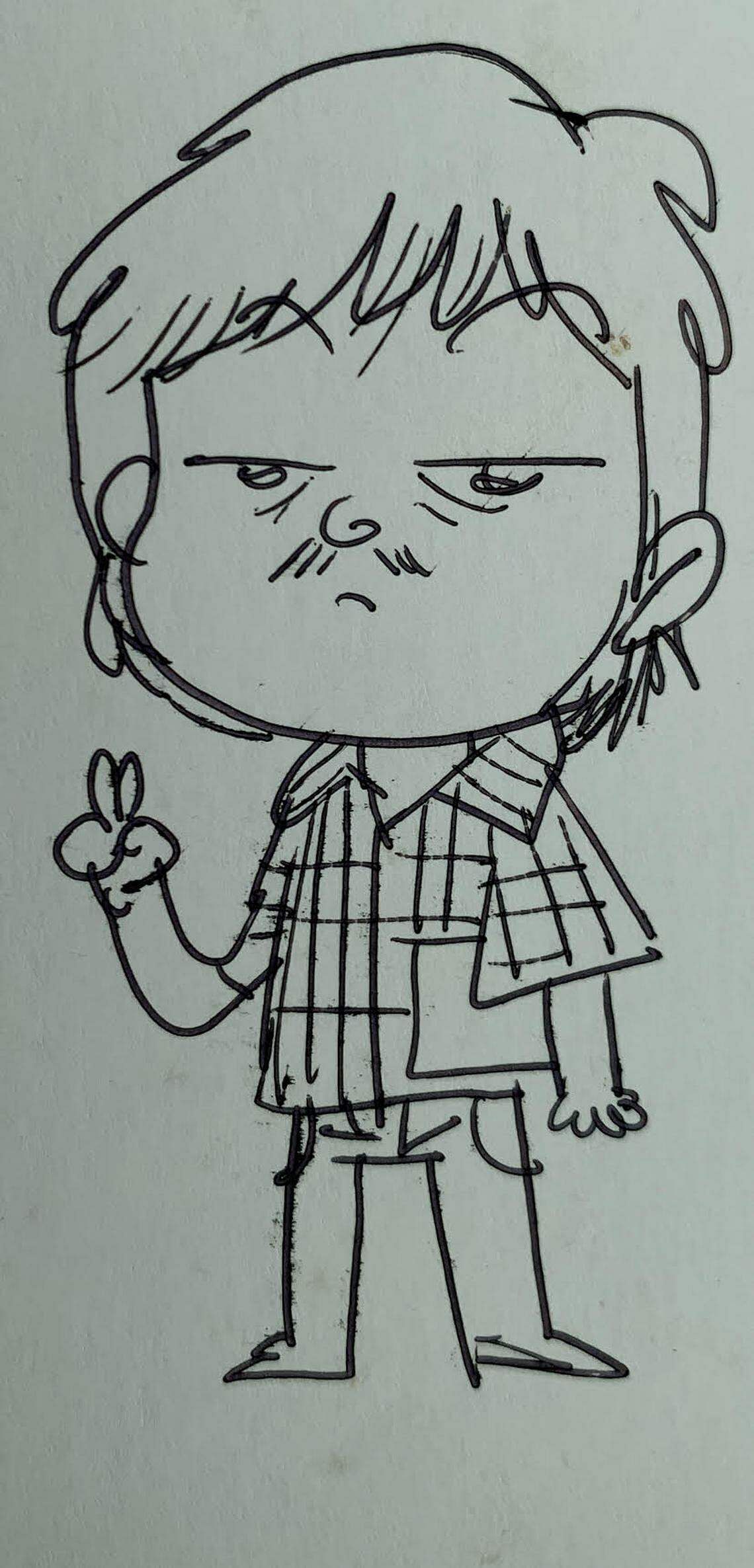Drawn To Satire: Sketches Of Cartoonists In Singapore
By C.T. Lim and Koh Hong Teng
Creative Non-fiction/Pause Narratives/Softcover/144 pages/$27/Major bookstores
3 stars
Giving long-neglected home-grown cartoonists some love is a great idea.
Drawn To Satire is a long overdue look at the lives of eight Singapore cartoonists. But while the intention might be good, the execution is wobbly, reflecting the pitfalls of attempting to document pop culture history in a country with a short memory and scant respect for art history.
Writer C.T. Lim and artist Koh Hong Teng have collaborated to present a series of creative non-fiction loosely based on the biographies of the cartoonists.
Lim is a long-time pop culture fan who has written extensively on Singapore’s comic book scene, while Koh published Gone Case: A Graphic Novel, Book 1 and Book 2 with writer Dave Chua in 2010 and 2011 respectively.
And these are, as the title proclaims, sketches – literally as the details are presented in graphic form as comic panels, and figuratively since the biographical details are short at best and non-existent in the worst case.
Creative non-fiction, in this reader’s mind, is a sometimes questionable genre in which practitioners play fast and loose with facts or the lack thereof. There is a sneaking suspicion that in the worst examples of the genre, writers resort to it as a way of papering over lack of research or sources.
This book begins promisingly enough with China-born artist and teacher Tchang Ju Chi. Tchang was tragically shortlived, disappearing, aged 38, during the infamous Sook Ching operation in Singapore in 1942, a massacre of Chinese men by Japanese forces.
Before World War II, Tchang was active in the mass medium of newsprint, editing and drawing for the Sin Chew Jit Poh, a Chinese daily. His print career offers more material traces to ground the story of his life.
Famed China artist Xu Beihong makes a cameo, having painted a portrait of Tchang’s wife and daughter.
Also introduced here is a shadowy cartoon figure, a recurring motif throughout the book meant, one presumes, as a unifying strand tying together a bunch of disparate chapters.
This tactic works better in sections where there is more biographical information serving as a ballast for this spectre’s imaginary musings.
There are a few names that will ring bells with art aficionados.
Nanyang pioneer artist Liu Kang, for example, who lived to the ripe old age of 93, long enough to be recognised for his artistic achievements. His cartoon work is less well known, limited to Chop Suey, a book capturing the horrors of the Japanese Occupation of Malaya published in 1946.
Similarly, second-generation artists Koeh Sia Yong, 86, and Lim Mu Hue (1936 to 2008), whose works can be seen at the National Gallery Singapore. Koeh, like Liu, is better known for his art than his cartoons. He drew political cartoons for Chinese newspaper Nanyang Siang Pau in the 1970s.

Lim is best known for his socially conscious woodcuts – a giant mural of his designs graces a wall at the Esplanade MRT station. But he joined Nanyang Siang Pau in 1969 and drew cartoons for the paper.
A recurring theme in the book is how cartooning has been frowned upon in Singapore. This is most evident in the chapter on celebrated political cartoonist Morgan Chua, indubitably a pioneer in his brave forays into the murky field beyond OB (out of bounds) marker territory in the 1960s. His snarky pen targeted everyone from the late Chinese leader Mao Zedong to Singapore’s founding prime minister Lee Kuan Yew.
There is a distinct sense that the belittling of arts and cartoons is, ironically, a backhanded compliment to the power of art and humour. How else does one explain the sometimes overwrought negative reactions to mere cartoons?
The unreceptive environment has meant fewer avenues for aspiring cartoonists, most of whom are Chinese men. There are two exceptions: Malay artist Shamsuddin H. Akib and woman artist Kwan Shan Mei.
Shamsuddin’s anecdote about dropping out of the Nanyang Academy of Fine Arts after a month because the classes were conducted in Mandarin is an all-too-brief glimpse into the challenges in pursuing the arts for minority artists.
Kwan, best known for creating the adorable Mooty the mouse series with children’s author Jessie Wee in 1980, is practically unknown to Singaporeans today. There are intriguing nuggets about this China-born artist’s achievements, including the tidbit that she wrote books which were turned into movies in Hong Kong.
These factoids also show up some of the weak spots in the book. The framework of creative non-fiction in the graphic medium offers Lim and Koh some leeway in expression. This is exemplified in the clever Chua chapter in which the cartoonist is depicted as his hero Bruce Lee, punching his way through myriad challenges.
But it is weakest in the Dai Yin Lang chapter, which opts for a series of fictional speculations about the activist and communist’s connections to various historical figures, such as novelist Lu Xun. Despite the clever in-joke reference to surrealist painter Rene Magritte’s This Is Not A Pipe with the constant refrain, “This is not Dai Yin Lang”, the awkward juggling of fact and fiction falls flat.
Koh’s artwork, which riffs confidently off the cartoonists’ varied styles, is one unifying factor throughout the choppy narrative.
If there is one thing the book succeeds unequivocally in doing, it is in highlighting the forgotten corners of Singapore’s cartooning history. For that alone, one forgives the scatty text editing and uneven narratives.
If you like this, read: The Art Of Charlie Chan Hock Chye by Sonny Liew (Epigram Books, 2015, $38.99, Amazon SG, go to amzn.to/3SV74j6), the landmark graphic novel that snagged not just the 2016 Singapore Literature Prize but three Eisner Awards. A brilliant, epic take on Singapore’s social and political history as filtered through the biography of the titular fictional cartoonist.


